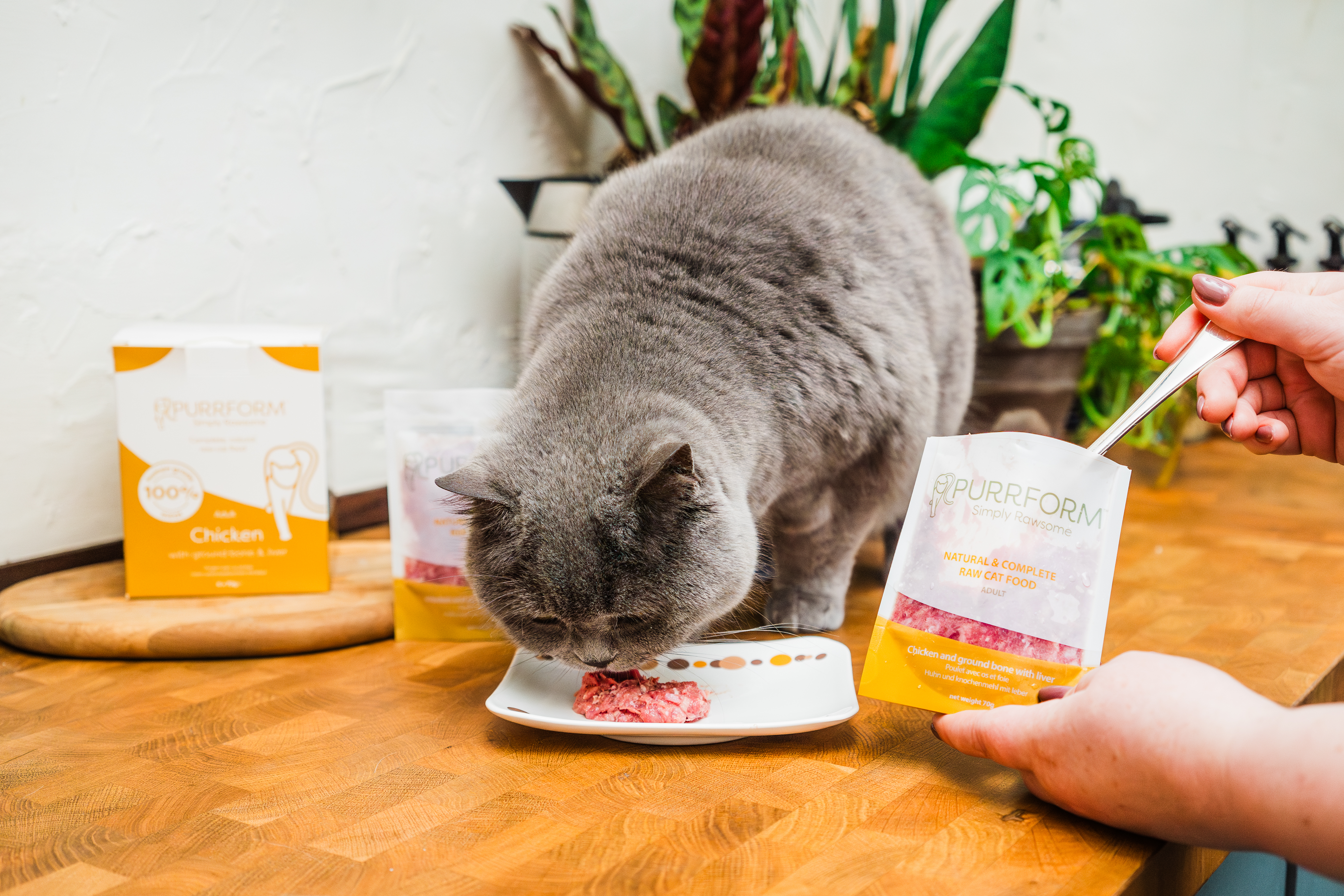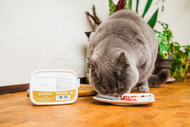Salmonella in Raw Feeding: Understanding the Real Risks and How to Manage Them
Posted by Dr. Amaya Espíndola, MRCVS on 16th May 2025
Dr. Amaya Espíndola, MRCVS is a holistic, cat and nutrition specialist, veterinarian based in Mallorca and the current president of the Raw Feeding Veterinary Society. She offers online consultations worldwide, focusing on nutrition as the first line of therapy. With a background in psychosomatic medicine, Amaya approaches each case by considering the deep connection between physical symptoms and emotional wellbeing, aiming to support feline health from a truly integrative perspective. You can find her at felvet.co.uk and on Instagram at @felvetforcats.

When discussing raw feeding in cats, one topic inevitably comes up: Salmonella. It’s one of the most cited reasons for avoiding raw diets, often surrounded by fear-based messaging. But how real is the risk? And more importantly, how can we make informed choices based on science and practical experience?
Can Cats Actually Get Salmonellosis?
Yes, but it is extremely rare. Cats are strict carnivores equipped with highly acidic stomachs (pH ~1-2) and a short, efficient gastrointestinal tract designed to handle raw meat and the bacteria that come with it. In most cases, cats exposed to Salmonella show no clinical signs at all. They may act as transient carriers without becoming ill.
When illness does occur, symptoms can include fever, lethargy, vomiting, diarrhea, and abdominal pain. However, in clinical practice, it’s much more common to see these signs caused by stress, dietary indiscretion, or other infections than by Salmonella. Moreover, in healthy, adult cats fed a balanced raw diet, confirmed clinical salmonellosis is virtually non-existent (Little, 2013).
Diagnosing Salmonellosis in Cats
Veterinarians must always approach diagnosis thoughtfully. A positive faecal culture for Salmonella does not confirm disease; it confirms exposure or carriage. To confidently diagnose salmonellosis, we need a compatible clinical picture (such as acute gastroenteritis or septicemia), and ideally, isolation of Salmonella from a normally sterile site (e.g., blood, lymph node) (Fredriksson-Ahomaa et al., 2017).
In integrative practice, we evaluate the whole animal: nutritional status, stress levels, gut resilience, and environmental hygiene. A robust cat with good microbiota rarely succumbs to opportunistic bacteria.
Cat Gut Flora and the Importance of Natural Bacteria
A healthy gut microbiome is a cat’s first line of defense. Cats fed natural, minimally processed diets tend to show greater microbial diversity and improved immune parameters. The presence of beneficial commensal bacteria helps suppress pathogenic invaders like Salmonella through a mechanism known as competitive exclusion (LeJeune & Hancock, 2001).
In dogs and humans, studies have directly linked microbial diversity to resistance against Salmonella infection. For instance, one study demonstrated that Salmonella exploits a microbiota altered by inflammation to proliferate in the intestine (Rivera-Chávez et al., 2016). In food-producing animals like poultry and calves, targeted probiotics have been developed specifically to block Salmonella colonization (EFSA, 2022).
Diets high in ultra-processed foods, on the other hand, have been associated with dysbiosis, inflammation, and compromised gut immunity. Restoring balance with fresh, species-appropriate food is one of the most powerful tools we have in preventive health.
Is There a Risk to Humans?
It is biologically possible for cats to shed Salmonella in their faeces and contaminate the household, but let’s put this into perspective. According to several epidemiological reviews, there are no confirmed cases of human salmonellosis directly linked to raw pet food in domestic settings. In contrast, there have been multiple outbreaks associated with contaminated kibble (CDC, 2023).
The key difference lies in handling. As with raw meat in human kitchens, hygiene is everything. Raw feeders are generally more aware of this and follow food safety practices diligently.
Practical Guidelines for Safe Raw Feeding
Feeding raw safely is not complicated, but it does require basic hygiene and sourcing awareness:
- Source responsibly: Choose brands that are transparent about their sourcing and pathogen control methods. Look for RAW SAFE accreditation or ask for proof of microbial testing and batch traceability.
- Freezing process: Meat frozen at -18°C or below for at least 3 weeks can help inactivate parasites and reduce microbial load.
- Storage: Always defrost raw food in the fridge, not at room temperature.
- Containers: Avoid plastic bowls or storage tubs. Use stainless steel, glass, or ceramic, and ideally store both raw and dry food in cool environments.
- Daily cleaning: Wash your cat's bowl and utensils every day with hot water and soap.
For those feeding kibble: transfer food to a clean, sealed container (non-plastic is ideal), and be aware that, once opened, kibble can become a bacterial breeding ground due to moisture and oxygen exposure.
A Note on Legislation
One reason raw feeding seems more controversial in some countries is due to differing regulations. In the United States, the FDA enforces a zero-tolerance policy for Salmonella in pet food, including raw, whereas the European Union follows a risk-based approach allowing trace levels within strict safety frameworks (FDA, 2022; EFSA, 2022). These differences shape public perception and commercial availability but don’t necessarily reflect the actual risk to animals or humans.
Balanced Perspective, Backed by Science
Feeding raw is not a guarantee of disease, just as feeding kibble is not a guarantee of safety. The crucial factors are food quality, microbiota health, and hygiene. A well-planned raw diet, combined with proper food handling and veterinary guidance, supports a cat’s natural biology and immune function.
As veterinarians, we must move beyond fear and advocate for informed, responsible feeding practices—empowering guardians rather than scaring them.
References
- Fredriksson-Ahomaa H. et al. (2017). "Raw Meat-Based Diets in Dogs and Cats." Veterinary Sciences. [DOI: 10.3390/vetsci4030033]
- LeJeune, J.T. & Hancock, D.D. (2001). "Raw meat–based pet feeding and food safety." JAVMA.
- Rivera-Chávez F. et al. (2016). "Depletion of butyrate-producing Clostridia from the gut microbiota drives an aerobic luminal expansion of Salmonella." Cell Host & Microbe 19(4):443-454. [DOI: 10.1016/j.chom.2016.03.004]
- EFSA (2022). "Risk assessment of Salmonella in animal feed." EFSA Journal.
- Little, S.E. (2013). The Cat: Clinical Medicine and Management. Elsevier.
- FDA (2022). Compliance Policy Guide Sec. 690.800.
- CDC (2023). "Outbreak of Salmonella linked to dry dog food."
